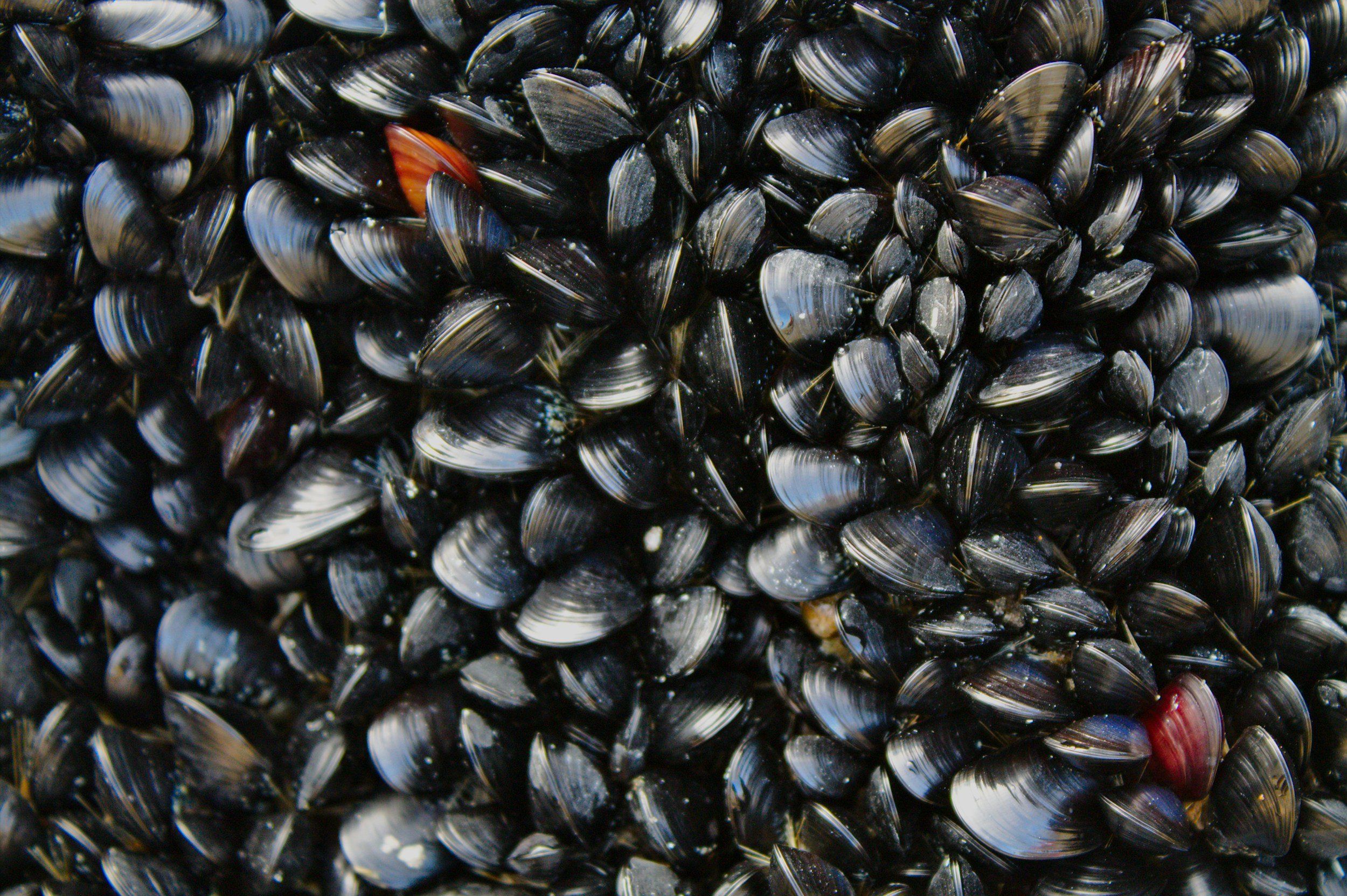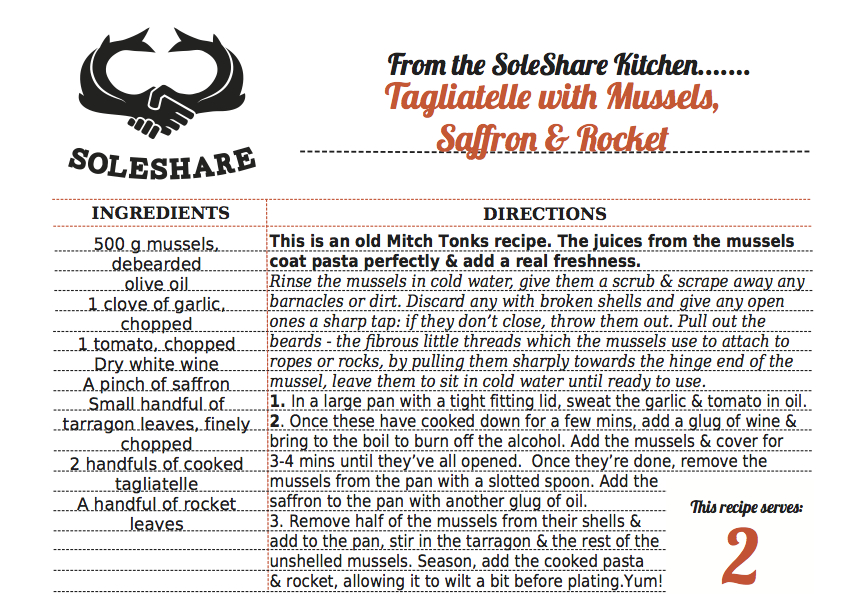
MUSSELS
Home | Fish & Recipes | Mussels
Mytilus edulis
Biology
A mussel's life history is one of luck. When planktonic spat (baby mussels) settle, they glue themselves on to the substrate and start sucking away, filtering tiny plankton and nutrients from the water. If they land on a decent spot, they’ll survive, if not, they’ll get gobbled up or wither away and die.
They spend all day and night pumping water through their body cavity and a 5cm mussel can filter 50 litres of water a day. This has meant that wild mussels in or near pollution sources should not be eaten as toxins tend to build up in their flesh.
The byssal threads, commonly known as ‘beards’, anchor them to the substrate. In the olden days, these threads were collected and spun into ‘sea silk’, a laborious and expensive process that made clothes for royalty since time immemorial. A pair of gloves spun from sea silk could be squeezed into a walnut!
Fishing
Most mussels we get in are rope grown. This technique of farming mussels goes back to the 12th century. It’s one of the most sustainable forms of aquaculture there is. Mussels don’t require any feeding and have the benefit of cleaning the very waters they inhabit.
Eating
Mussels have been eaten since man came out of the savannah and onto the shoreline. Most ancient human settlements are located by ‘middens’, giant piles of seashells, like neolithic rubbish dumps.
They fell out of favour in the 19th century, mainly due to industrial pollution, but water tests are carried out daily on mussel farms and limits on chemicals are strict.
Store mussels in a bowl in the fridge, covered with a damp tea towel. They’re alive, so don’t seal them in tupperware, they need to breath. Don’t cook any that stay open after tapping them on a table (bare in mind it may take them a minute to close if they’re fresh from the fridge). Also, don’t eat any that after cooking, remain closed.
Mussels are best cooked in steam and the best steam is wine steam. In a large pan, sweat some finely diced shallot or onion with a finely sliced clove of garlic. Once they’re translucent add a glass of wine, tip in your mussels, cover with a lid and cook for two minutes, giving them a couple of shakes. Once the majority of them have opened, they’re good to go. They should be yielding and taste of the seaside, not rubbery and fishy.







